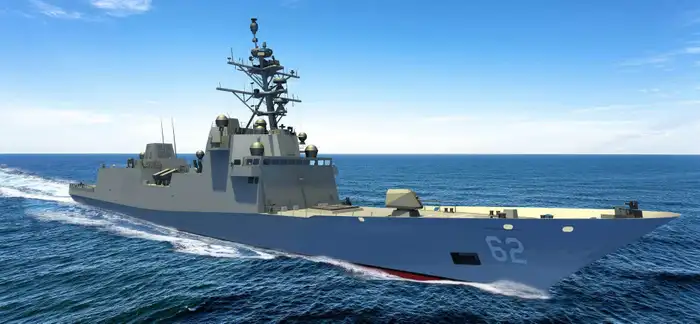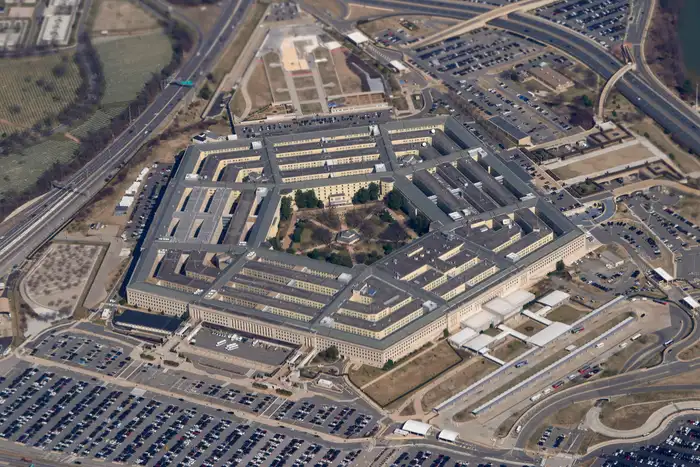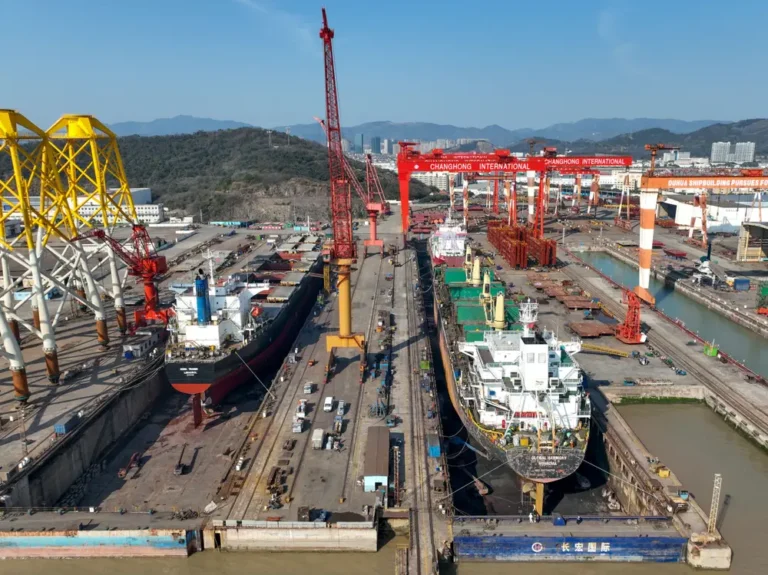Elon Musk is looking for trillions in government waste, and defense is a massive potential target

Elon Musk, the SpaceX CEO who will head a new effort to slash government spending, has criticized the contracts common to the defense industry.
President-elect Donald Trump has tapped Elon Musk to help spearhead cuts to government spending, and the defense sector could be a prime target.
The Defense Department’s budget for the 2024 fiscal year is $841 billion, roughly 12.5% of the total federal budget, and the Pentagon has struggled with cost overruns and waste.
Musk plans to review federal spending as part of a newly created “Department of Government Efficiency” — or DOGE. It’s not an official agency, and Congress controls budgets for federal agencies. DOGE’s role may be limited to offering advice to Trump.
There are still a lot of unknowns around DOGE as it solicits direction from X, formerly Twitter, including where and how it’ll find up to $2 trillion in promised cuts.
But Musk’s past comments hint at one area he could target: defense contracts.
Musk has criticized government contracts with top defense companies that put the government on the hook for overages in the construction of warships, aircraft, and combat vehicles. And his company, SpaceX, has won some government contracts by bearing higher risks of cost overruns.
Musk’s way of doing business
Before Musk founded SpaceX in 2001, NASA and the Pentagon often used “cost-plus” contracts, which reimbursed contractors for their expenses and provided a set profit margin.

President-elect Donald Trump listens as Elon Musk speaks during a campaign rally in Pennsylvania in October.
The contracts allowed for cost overruns and placed much of the risk on the US government, Clayton Swope, a senior fellow at the Center for Strategic and International Studies think tank, told B-17.
Musk compared the contracts to “gravy trains” in journalist Walter Isaacson’s biography of the billionaire. “You just can’t get to Mars with that system,” Musk said. “They have an incentive never to finish. If you never finish a cost-plus contract, then you suckle on the tit of the government forever.”
Musk built SpaceX’s business model around fixed-price contracts. This means the government and contractors set a price for the project at the onset, and the company is paid predetermined amounts once it hits certain milestones.
SpaceX has had several fixed-price contracts with NASA, including a $1.6 billion contract in 2008 for 12 missions under the agency’s Commercial Resupply Services program and a $2.6 billion contract in 2014 that covered six crewed missions to the International Space Station.
The US government previously reserved fixed-price contracts for off-the-shelf products that did not need to be specially made for the government, but SpaceX demonstrated that it could fund missions more efficiently, Swope said.
Without the processes and tracking required for cost-plus contracts, companies like SpaceX “can be more agile to changes in the market and iterate on their products faster,” Swope said. “When it’s done right, it can be beneficial to both the government and the company.”

A SpaceX Falcon Heavy rocket with a NASA spacecraft bound for Jupiter lifts off from pad 39A at the Kennedy Space Center in October.
Overspending and delays
The Pentagon has often been criticized for mismanagement, delays, and ballooning costs on expensive systems. Earlier this year, for instance, a government watchdog found that the F-35 stealth fighter program has become more expensive, with expected lifetime costs topping $2 trillion, even with the aircraft flying less often than in the past.
The defense industry, like the military, has also been called to account. Major shipbuilding projects, for example, are severely delayed. Coming off problems with the Zumwalt-class destroyers, first-in-class USS Gerald R. Ford, and the Littoral Combat Ship, new constructions like the next Ford-class carrier, Constellation-class frigate, and Columbia-class submarine are, in some cases, years behind schedule. This is a concern as the US military aims to maintain its edge against its “pacing challenge” China.
Separately, DoD has faced criticism over use-it-or-lose-it spending toward the end of the fiscal year, overpayment for common products, and seven consecutive failed audits of the department’s $4.1 trillion in assets and $4.3 trillion in liabilities.
To tackle the contracting conundrum and save money, Mike Gallagher, a former Republican congressman from Wisconsin and the current head of defense at Palantir Technologies, suggested in a Wall Street Journal op-ed this week that the incoming Pentagon leadership should enforce fixed-price contracting to put more burden on private contractors rather than the US government.
“The Defense Department’s cost-plus contracting model has destroyed competition and innovation while exploding costs,” Gallagher wrote, adding that the defense secretary should be required to sign off on cost-plus contracts.
Musk’s new initiative could recommend exactly this: a move away from cost-plus contracts toward fixed-price contracts.

The aircraft carrier USS Gerald R. Ford at Newport News Shipbuilding in Virginia in April 2016.
But fixed-price contracting may have its own set of problems. Bryan McGrath, a retired naval officer and the managing director of The FerryBridge Group LLC, responded to Gallagher’s article on social media, saying private companies shouldn’t have to face all the costs for systems that only the US government wants to buy.
Todd Harrison, a senior fellow at the American Enterprise Institute who focuses on defense strategy and budgeting, said switching from cost-plus to fixed-price contracting doesn’t necessarily save the government money. It also doesn’t necessarily produce more effective systems designed to withstand combat or decades of use.
“What it does is, by moving the risk to industry, it creates more stability for government and what they’re going to pay for things,” he told B-17, adding that “it puts better incentives on industry, because if industry has a cost overrun, they pay for it — it’s coming out of their profit. If they can deliver below cost that they expected, they can make more money. So it really just changes the incentives.”
Harrison said that there had already been a shift toward firm-fixed-price contracts, which tends to advantage smaller and newer defense companies — a trend he expects will accelerate during the Trump administration. But there are some areas where cost-plus contracts are sure to continue.
Shipbuilding, especially for projects like aircraft carriers and nuclear-powered submarines, is often arranged with large, multi-year contracts. This is because there may be only one company that can build the system, with one buyer (the Pentagon), and the product is unique to the US military.

A digital rendering of the Constellation-class frigate.
“In those areas of the defense-industrial base,” Harrison said, “you have to manage it more like a public utility, where the free market does not exist, and free market principles do not work.”
More efficient programs
Mid-development changes to weapons systems designs are a major cost driver. To tackle this, the government could fix requirements for these systems early in the design process and enforce stricter rules around changes.
“One way that we know saves money is if you fix a design and don’t add features,” Michael Bohnert, a licensed engineer at the RAND Corporation, told B-17.
Today’s F-35, for example, is “almost a different plane” than what was defined in its original requirements. Changes in scope have added costs. “You look at other programs that have been pretty narrowly defined — they’ve stayed in budget,” he said.
Archer Macy, a retired Navy admiral and missile defense expert at CSIS, told B-17 there’s a history of abusing contracts where there’s too much fluidity with requirements and specifications, making them vulnerable to changes.
He said the government needs to find the “right type of contract for the right purpose (where you are in the development and acquisition cycle), stick to and don’t abuse requirements and specs, and make people accountable.”

An aerial view of the Pentagon
Musk’s new initiative may target other areas of Pentagon spending, as well.
He could consider reducing the Pentagon’s large civilian workforce and officer corps, for example, or crack down on instances like the US Air Force paying more than 80 times the regular commercial value for bathroom soap dispensers for its C-17 aircraft.
Overall, experts warned against any changes that could harm US warfighting capabilities or compel companies to cut corners and deliver substandard weapons systems.
“However well-intentioned, the reach for efficiency could also undercut your military effectiveness, and you got to keep that in balance,” John Harvey Jr., a retired Navy admiral, told B-17.
In fact, some members of Congress think the US should spend even more on defense. Mississippi Sen. Roger Wicker, the highest-ranking Republican on the Senate Armed Services Committee, warned earlier this year that the country’s defense investment is not sufficient to counter America’s adversaries.
“Our defense industrial base is underfunded and unprepared for the wars of today, tomorrow, and the foreseeable future,” his office said in May.






